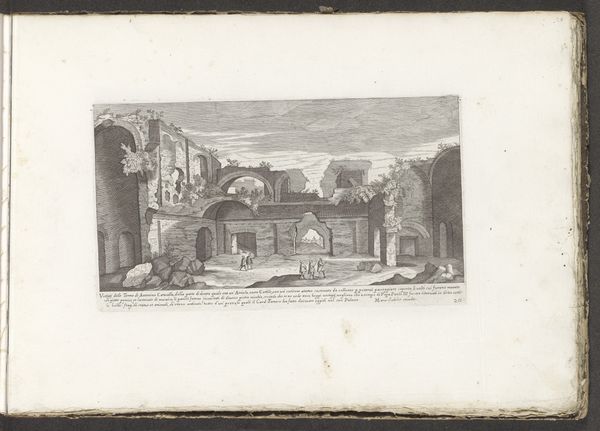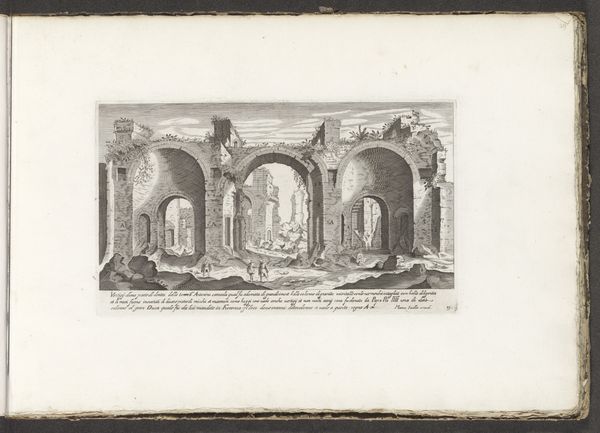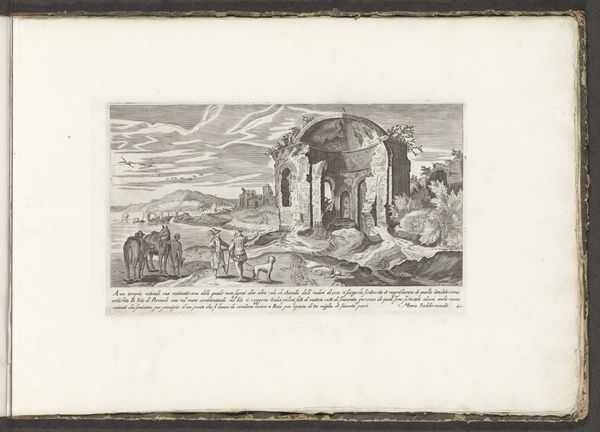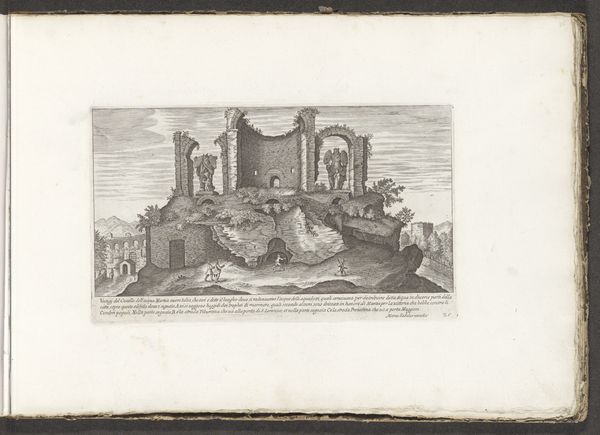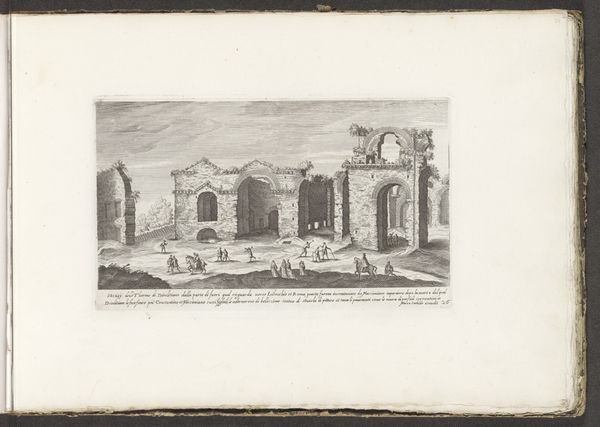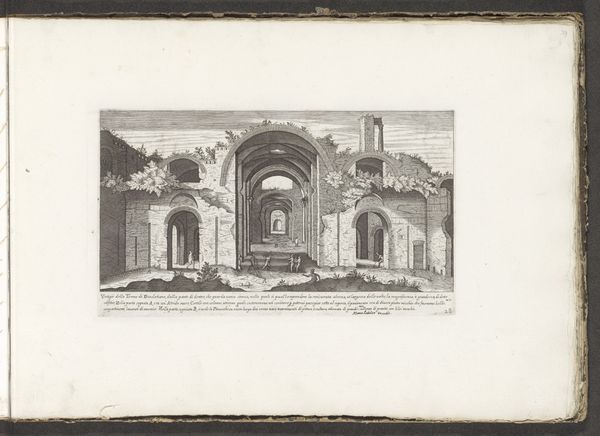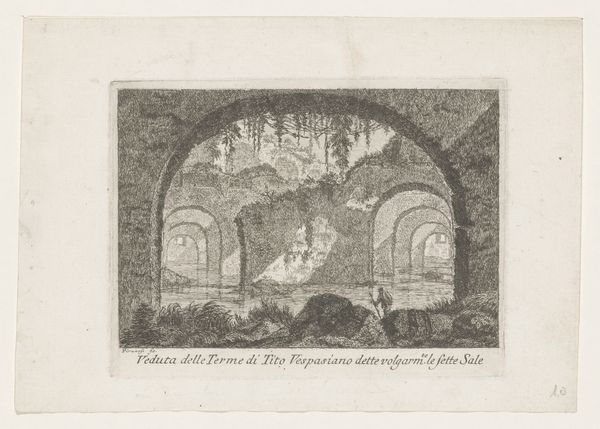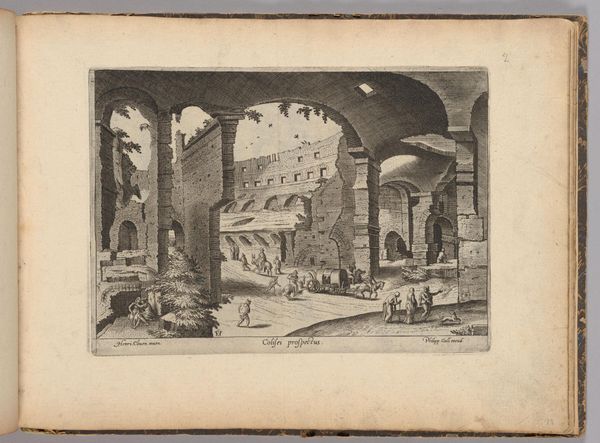
print, engraving, architecture
#
baroque
# print
#
line
#
cityscape
#
history-painting
#
italian-renaissance
#
engraving
#
architecture
Dimensions: height 157 mm, width 269 mm
Copyright: Rijks Museum: Open Domain
Curator: At first glance, I sense a profound melancholy—the visual equivalent of a minor chord resonating with ruin. Editor: Indeed. We are looking at an engraving from 1680 entitled "Basilica van Maxentius." Though its creator remains anonymous, it depicts the remnants of the ancient Basilica of Maxentius in Rome. Curator: The stark line work lends a haunting quality. Those arches, fragmented yet still commanding, echo the cyclical nature of empires, their rise and inevitable fall. Do you sense, as I do, the weight of history pressing down from above? Editor: Absolutely. The image is a powerful commentary on the Baroque era’s fascination with antiquity and its re-evaluation of history. Artists routinely flocked to Rome to grapple with these monuments as a mode to negotiate the passage of time. Here, what we might interpret as melancholy is really a kind of intellectual hunger for understanding the past. Curator: I’m intrigued by how this print simplifies the sprawling complex, almost distilling it to essential architectural forms. Those fragmented pillars, those looming arches… they feel less like historical markers, more like symbolic remnants of a former ideology. What societal forces shaped the building of this impressive basilica? Editor: Originally completed under Constantine I, the basilica served as a space for law courts and other public functions. This engraving, however, comes along much later during a time of great interest in Roman architectural ideals, spurred by urban planning that revitalized many monuments into civic structures and the Papacy, effectively repurposing their symbolic power to promote religious and papal authority. It becomes another chapter in the ongoing story of Rome. Curator: I see, like palimpsests with layers of meaning! One era building on top of another both physically and symbolically. And looking at this piece makes me wonder what the modern ruin can teach us today. Editor: Perhaps it echoes contemporary issues, echoing those who feel abandoned by larger forces, or those relics that call to the power that time has over cultural institutions and power. I will definitely remember that interpretation.
Comments
No comments
Be the first to comment and join the conversation on the ultimate creative platform.
